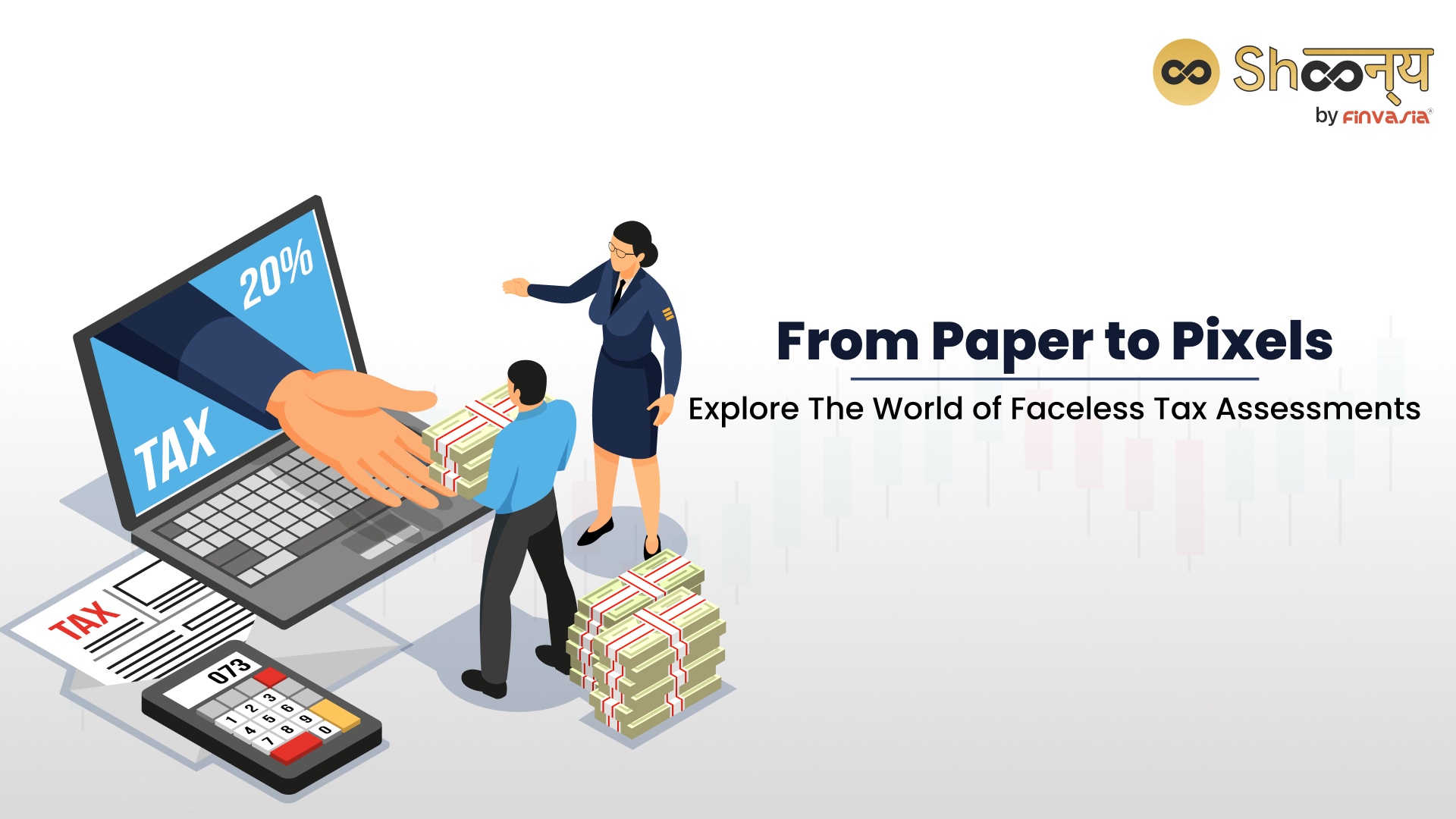The revolutionary Faceless Income-Tax Assessment scheme is reshaping the landscape of tax assessments, providing individuals with an efficient and transparent process. Instituted by the Central Board of Direct Taxes (CBDT), the scheme is centred around the National Faceless Assessment Centre (NFAC), working in tandem with various other units.
Key Highlights of the Faceless Assessment Scheme
- The National Faceless Assessment Centre (NFAC) was established by CBDT.
- Scrutiny assessments are conducted without physical meetings or documents.
- Faceless assessments eliminate direct interaction with tax authorities.
- The process includes digitally signed notices and electronic responses.
- Option for adjournment and provision for response attachments.
- Final assessment order issued based on satisfaction with response.
What is the Faceless Assessment Scheme
The Faceless Assessment Scheme is a groundbreaking approach in taxation where tax assessments are conducted digitally without the need for physical meetings or paper submissions. Instituted by the Central Board of Direct Taxes (CBDT), this scheme utilises the National Faceless Assessment Centre (NFAC) and electronic communication to streamline the assessment process, ensuring transparency, efficiency, and reduced direct interaction between taxpayers and tax authorities.
A Step Towards Transparent Income Tax Assessment
Gone are the days of physical meetings and paper submissions during scrutiny assessments. The government’s pioneering concept of faceless assessments ensures that the scrutiny process is conducted entirely online. This means no more physical meetings or submission of physical documents, streamlining the process and reducing the need for in-person interactions.
A Deeper Dive into the Faceless Assessments
Even after meeting the July 31 deadline for filing income-tax returns (ITR), your case might not be closed. Tax authorities retain the prerogative to select specific tax returns for meticulous scrutiny. Individuals may be required to substantiate claims made in their returns through document submission, referred to as an assessment. This marks a departure from the previous tax assessment approach involving personal visits to tax offices and physical document filing.
Seamless Implementation Of Faceless Tax Assessment
The introduction of faceless assessments is a transformative move. The NFAC employs digital channels to select cases for scrutiny and dispatch digitally signed notices. These notices reach individuals via registered email IDs and e-filing portal accounts. The entire assessment process adheres to the tenets of faceless assessment.
Exploring Faceless Assessment Scheme: The Digital Procedure
Navigating the faceless assessment process is straightforward. The NFAC initiates the process by issuing digitally signed notices to individuals. These notices are accessible through the e-filing portal. Response submission, including the option for partial or full responses, is carried out electronically. If more time is needed, adjournment requests can be made via the e-filing portal.
Response Submission Guidelines: Procedure for Making e-assessment
- Once the case is selected for scrutiny, the NFAC will issue a digitally signed notice to the individual on his/her registered email ID as well as in the registered account with the e-filing portal (https://www.incometax.gov.in/iec/foportal/).
- The individual can view the notice on the e-filing portal. After logging in, the notice can be seen in the e-proceedings option under ‘pending action’, under the “for your action” tab.
- The reply to the notices is to be filed through the e-filing account only.
- If the individual needs additional time to collate information, he may seek adjournment through the e-filing portal under the assessment tab. The maximum period for which an adjournment can be sought is 15 days.
- While submitting the response, there is an option to select whether the response submitted is a “Partial response” or a “Full response”.
- The response to the notice can be provided in the space provided therein (with a limitation of words). Further, a written response submission along with supporting documents can be attached as an annexure. However, while uploading the document, one has to ensure that the size of the document being submitted does not exceed 50 MB.
Tax Authorities’ Role
- After responses are submitted, tax authorities will go through the information submitted on the back end.
- Suppose the tax authorities are not satisfied with the response or need further information based on the documents provided. In that case, they may issue another notice to seek additional details on the same portal and email ID of the individual.
- The individual may also request a personal hearing through video conferencing. If the individual’s request is approved under the applicable guidelines, the hearing will be conducted through video conferencing only.
Post-Submission Scenarios
Upon receiving the final response, the NFAC follows specific routes. A satisfactory response leads to the issuance of a final assessment order by tax authorities. Conversely, an unsatisfactory response prompts the issuance of a draft assessment order outlining the changes proposed.
- Once the NFAC receives the final response:
- If the NFAC is satisfied with the submission and documents, the tax authorities will issue a final assessment order.
- If the authorities are not satisfied with the submission and propose to increase the income/reduce the loss, and raise demand, they will issue a draft assessment order.
- In response to the draft assessment order, the individual may choose to either file objections to the variation with the Dispute Resolution Panel (DRP) or wait for 30 days for the assessing officer to pass the final order.
- The individual can subsequently file an appeal with the Commissioner of Income Tax (Appeals) within 30 days of receipt of the final assessment order.
Conclusion: Faceless Assessment Promoting Transparency and Efficiency
This transformative shift to faceless assessments not only simplifies the process for individuals but also aligns with the government’s commitment to transparency and accountability. It allows seamless representation without the need for personal appearances, truly modernising tax assessments.
Source: moneycontrol.com
______________________________________________________________________________________
Disclaimer: Investments in the securities market are subject to market risks; read all the related documents carefully before investing.

